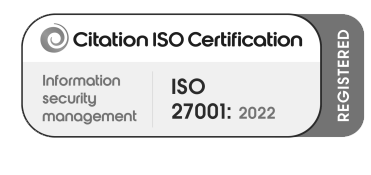






The food industry has faced many implications during the year of 2020. With the government limiting consumer movements during regional and national lockdowns, businesses have seen a huge overnight change in consumer purchasing behaviours. From bulk buying to online shopping, people are changing the way they access products.
However, pre-COVID, food manufacturers and distributors had started to explore the idea of e-commerce and what impacts the technological change would have when selling their products online. But with the pressure of the virus and the closure of all restaurants and entertainment venues in the UK, this change has forced its way sooner than anticipated; meaning some companies in the food industry have had to adapt from B2B to B2C (or even a mix of the two) – which brings entirely different challenges.
Managing the switch from B2B to B2C with e-commerce won’t come naturally to most food manufacturers and distributors. In fact, for some, this may be the first time selling directly to the end-consumer. So, what obstacles do you have to overcome and how can a Microsoft Dynamics 365 food ERP software help?
As a business in the food and drink sector, you’ll always be looking for the best ways to optimise your shelf life. Distributing products with a sell-by, use-by and display-by date can feel like you’re constantly up against the clock, but these added pressures are essential in delivering edible stock before the date expires.
When switching to e-commerce, it’s likely you will experience a higher volume of orders but with smaller baskets at the checkout. This means all your fast-moving and short-use inventory need to be at the front of your warehouse to allow your pickers and packers to grab and move onto the next item. By using Dynamics Food, which is powered by Dynamics 365 Business Central, you’re able to control your shelf life by automatically prioritising the items that need to be picked first to ensure your consumers have an acceptable amount of product life remaining.
When making the jump to e-commerce, you should select a platform that perfectly integrates with your ERP to guarantee accurate, up-to-date and reliable data on your website.
Doing this will allow you to display a full catalogue of items – even during out of office hours – to be able to meet with consumer demands, which can include quick adjustments to product line information. Having a platform that integrates with your ERP will help to continue the growth of your B2C e-commerce sales year on year.
Whilst fuel may be much lower this year, you’ll still want to avoid sending your drivers in the most inefficient delivery route possible – but how do you guarantee that?
By introducing the clever shipment management capabilities of Dynamics Food to suggest the route and provide visibility to the user of weight and volume by the route to make decisions on which delivery vehicle is most suitable to each case. Having a solution that considers all/any special circumstances (including allocated delivery times, locations, unloading requirements) you can remain efficient, productive and flexible with delivery routes that suit your business and protect your profitability. Plan your transportation and move products more efficiently, reliably and cost-effectively with Dynamics Food.
Suppose you are relying on Third Party Logistic (3PLs) companies to deliver your products directly to your customers. In that case, you will need to track each stage of the movement, including the stock you have remaining in their warehouses. Depending on a paper-based trail for this process isn’t sufficient enough, as your stock changes too quickly and can become too difficult to manage and control accurately.
Having Dynamics Food in the palm of your hand means you’re able to save a lot of processing time by utilising integrated EDI to your 3PL, getting your customer orders out to your 3PL, with confirmation of what has been shipped by Lot back into your system.
Like many food businesses, some Tecman customers have had to completely re-evaluate their business model and flip it on its head overnight. A company that once distributed Italian products to restaurants is now giving consumers an at-home experience with luxury pasta, cheese and deserts that they can Click & Collect.
Transforming from B2B to B2C is never easy, but with Dynamics Food, these businesses were able to adapt, evolve and grow with the times quickly. Processes were more streamlined than ever due to the automated integration of Dynamics 365, meaning they had more time to focus on their future and where 2021 would take them.
To find out more about Dynamics Food and Dynamics 365 Business Central, click here to get in touch today.